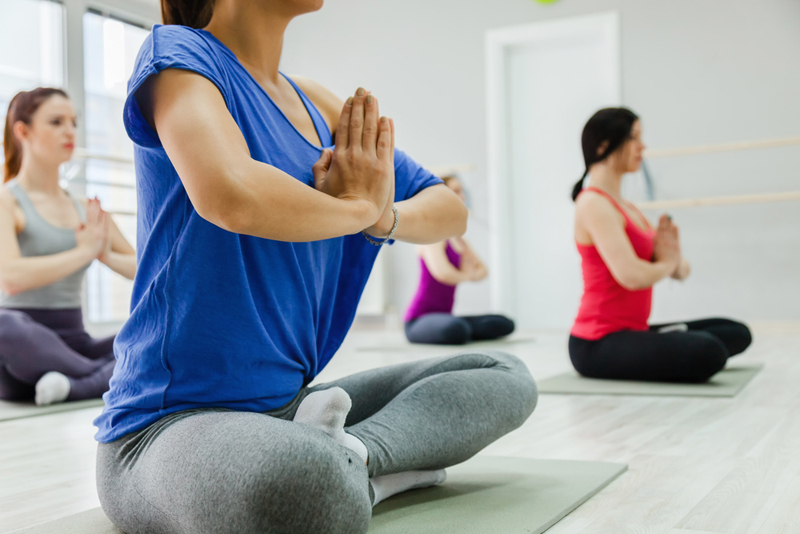So now we understand that stress is a natural process our body undergoes and that in small doses it can actually be beneficial to our health, we’re firmly in the driving seat to control how our bodies react to stressful situations using the power of breathing!
If you read on we will tantalise you with the miracle of breath…
How many different relaxation techniques can there be…?
The objective isn’t so much to reduce the number of activities that cause stress but to change our reactions to such activities. Through sustained adoption of relaxation techniques, we may begin to realise the benefits and choose to change our lifestyle to a more balanced one.
First things first, make relaxation a part of your daily routine: leave yourself 10-20 minutes at least once a day, preferably in the morning. Like anything, it is about forming habits – so start with something you find easy and enjoyable for 5-10 minutes and build up to practising for longer.
In our experience, once you find how enjoyable it is, you will begin to make time for your daily practice and the time will expand for you effortlessly.
How does breathing deeply help in meditation?
The process of watching ourselves breathing in and out deepens the breath, and also allows us to focus our concentration on something other than our thoughts, allowing the mind to become ever still.
Yes thoughts will constantly pass through our minds, but as long as we do not engage in them, they will pass on like little waves.
On one level meditation is a form of mindful focus, however as we deepen our levels of concentration, it’s possible for our minds to move to deeper levels of consciousness (a topic for another blog!)
Here are some of relaxation techniques you might like to try:
Deep Breathing
The key to deep breathing is to breathe deeply from the abdomen, getting as much fresh air as possible into your body. Usually breath is taken in through the nose and out again through the nose. Sit comfortably with your back straight either cross legged or straight legged, on the floor or on a chair with your feet flat on the floor. Place your hands on your lap, one on top of the other and simply watch your breath. Try to make the inhalation and exhalation even, pause before and after each breath in and out.
A different breathing exercise: where breath is exhaled through the mouth:
1. Close your eyes and drop your chin down to a comfortable position over your neck. Your stomach should rise.
2. Breathe in through your nose for a count of 5, taking in maximum air.
3. Then take your head up, holding the breath for a count of 3.
4. Then exhale slowly through the mouth for a count of 5, contracting your abdominal muscles.
5. Hold for a count of 3. You’ve completed round 1!
6. Do this for 10 rounds, and over time you can build this up to 50 rounds.
7. Once you have finished, go back to inhaling and exhaling normally through your nose.
Mindful meditation
Mindfulness is the ability to remain aware of how you’re feeling right now, your ‘moment-to-moment’ experience—both internal and external. Mindfulness can be applied to activities such as walking, exercising, eating, or meditation.
Some meditations bring you into the present by focusing your attention on a single repetitive action, such as your breathing or a few repeated words. Other forms of mindfulness meditation encourage you to follow and release internal thoughts or sensations.
Key points in mindfulness mediation are:
- A quiet environment – Choose a secluded place in your home, office, place of worship, or in the great outdoors where you can relax without distractions or interruptions.
- A comfortable position – Get comfortable but avoid lying down as this may lead to you falling asleep! Sit up straight, either in a chair or on the floor. You can also try a cross-legged or lotus position.
- A point of focus – Your point of focus can be internal – a feeling or imaginary scene – or something external – a flame or meaningful phrase which you repeat throughout your session. Focus on an object in your surroundings to enhance your concentration, or alternatively you can close your eyes.
- An observant attitude – If thoughts intrude during your relaxation session, don’t fight them. Instead, gently turn your attention back to your point of focus.
Yoga
Yoga involves a series of both moving and stationary poses, combined with deep breathing. As well as reducing anxiety and stress, yoga can also improve flexibility, strength, balance, and stamina. Practiced regularly, it can also strengthen the relaxation response in your daily life.
There are particular poses that are more relaxing such as Savasana, Cat-cow, child’s pose, hip roll, downward dog and bridge. Why not enjoy a yoga class at Diana’s Health and Fitness?
While there are many techniques for relaxation that have been developed, choose what is right for you. Essentially, meditation and deep breathing are the fundamentals to bring about a state of present calmness.
There are huge benefits from all angles: physical, psychological, emotional and spiritual. The more one practices on a daily basis, the more one benefits. Have a go and see for yourself. The mind may resist but for a while, until it realises doing nothing is thoroughly enjoyable!

